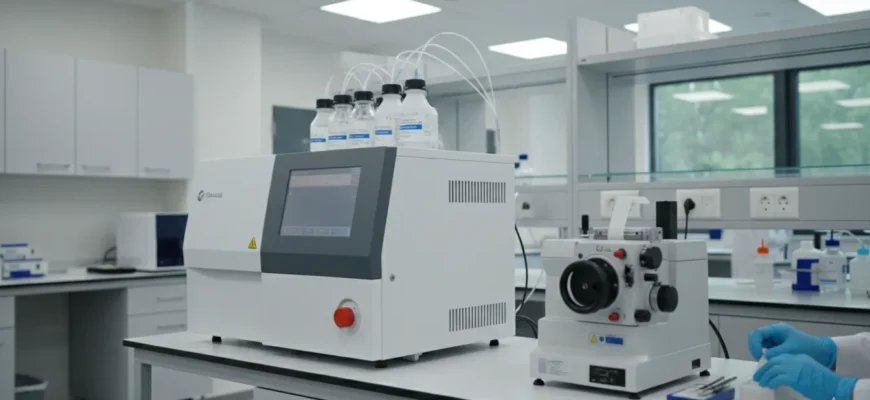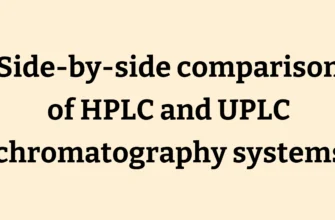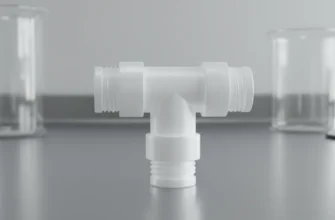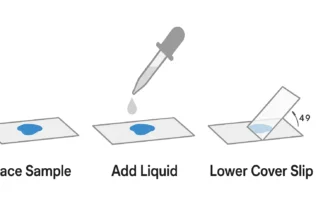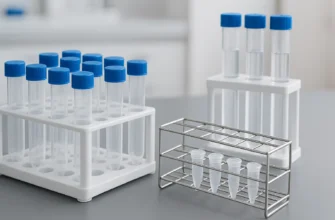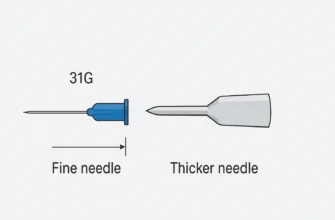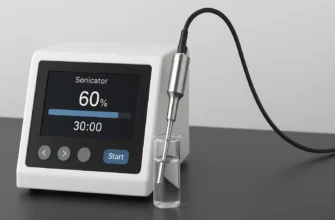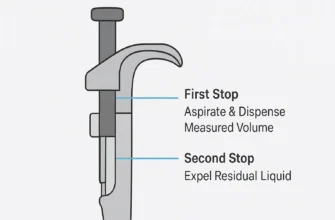Essential Histology Lab Equipment for Your Research Needs
Key Highlights
Essential histology equipment forms the foundation of any laboratory focused on microscopic tissue examination. Modern histology labs can choose between new and refurbished equipment, with both options offering distinct advantages for different budgets and requirements. Key laboratory equipment includes basic instruments for sample preparation, advanced devices for detailed tissue analysis, and automated systems for high-throughput processing. Proper maintenance protocols and routine calibration are critical for extending equipment lifespan and ensuring accurate diagnostic results. Partnering with reputable suppliers provides access to comprehensive technical support, training programs, and warranty coverage that enhances laboratory workflow efficiency.
Introduction
Histology, the microscopic study of cells and tissues, plays a vital role in medical research, diagnostics, and anatomic pathology. This field requires specialized equipment to transform raw tissue specimens into thin, stained sections suitable for microscopic analysis. High-quality histology equipment ensures accurate sample preparation, enabling pathologists and researchers to make precise diagnoses and advance medical knowledge. Whether conducting routine clinical diagnostics or cutting-edge research, the right equipment combination guarantees reliable results and efficient laboratory workflows.
Essential Equipment for a Histology Laboratory
Every histology laboratory depends on core equipment that transforms tissue specimens from collection through final microscopic examination. These instruments perform critical functions including tissue fixation, processing, embedding, sectioning, and staining. Modern histology equipment increasingly incorporates automation and digital interfaces to enhance efficiency and accuracy in sample processing.
The fundamental workflow involves several sequential steps, each requiring specific equipment. Tissue processors infuse specimens with preservatives and embedding media, microtomes create ultra-thin sections, and automated stainers apply contrast-enhancing dyes. Understanding each instrument’s function is essential for establishing an effective laboratory operation.
List of Basic Histology Instruments for Sample Preparation
Sample preparation represents the foundation of successful histological analysis, requiring several key instruments working in coordination. These tools ensure consistent tissue handling from initial processing through slide preparation.
Tissue Processors: Automated systems that dehydrate tissues and infiltrate them with paraffin wax or other embedding media through controlled processing cycles. Modern processors feature programmable protocols and can handle multiple cassettes simultaneously.
Embedding Centers: Integrated workstations providing heated paraffin reservoirs, dispensing systems, and cooling plates for creating stable tissue blocks. These stations feature precise temperature control and ergonomic designs for efficient operation.
Coverslippers: Automated devices that apply glass coverslips to finished slides, protecting tissue sections and creating permanent preparations. High-capacity models can process hundreds of slides per hour with consistent results.
Advanced Devices for Tissue Analysis
Specialized applications often require sophisticated instruments beyond basic preparation equipment. These advanced devices enable ultra-precise sectioning, specialized staining protocols, and high-throughput processing capabilities.
Ultramicrotomes: Precision cutting instruments capable of producing extremely thin sections (50-100 nanometers) suitable for electron microscopy applications. These devices use glass or diamond knives for unprecedented sectioning accuracy.
Cryostats: Refrigerated cutting stations that section frozen tissue specimens for rapid intraoperative diagnosis. Modern cryostats feature advanced temperature control and contamination prevention systems.
Automated IHC Stainers: Sophisticated systems performing complex immunohistochemistry protocols with precise reagent delivery and timing. These instruments support personalized medicine approaches through biomarker detection capabilities.
Difference Between Equipment and Consumables in Histology
Understanding the distinction between capital equipment and consumable supplies is crucial for laboratory planning and budgeting. Equipment represents long-term investments in instrumentation, while consumables encompass regularly replaced materials essential for daily operations.
Laboratory equipment includes microtomes, tissue processors, embedding stations, and automated stainers – instruments designed for years of service with proper maintenance. These devices form the operational backbone of histology workflows and require significant upfront investment but provide long-term value through consistent performance.
Consumables include microscope slides, coverslips, tissue cassettes, paraffin wax, staining reagents, and mounting media. These materials are consumed during routine operations and represent ongoing operational expenses. Quality consumables are essential for maintaining consistent results and preventing contamination issues that could compromise diagnostic accuracy.
Choosing Between New and Refurbished Histology Equipment
Laboratory managers face important decisions when acquiring histology equipment, particularly regarding new versus refurbished instruments. Both options offer distinct advantages depending on budget constraints, application requirements, and institutional preferences.
Benefits and Drawbacks of New Devices
New equipment provides access to the latest technological advances, enhanced automation features, and improved workflow capabilities. Manufacturers typically include comprehensive warranties, installation services, and training programs with new instrument purchases.
Advantages of new equipment:
-
Latest technology and advanced features for improved efficiency
-
Full manufacturer warranty and comprehensive support services
-
No concerns about previous usage history or hidden maintenance issues
-
Often includes installation, training, and validation services
Potential drawbacks:
-
Higher upfront investment costs compared to refurbished alternatives
-
Longer lead times for delivery and installation
-
May include features not required for specific applications
Advantages of Refurbished Equipment and Common Considerations
Refurbished histology equipment offers significant cost savings while maintaining operational reliability. Quality refurbishment programs restore instruments to near-original performance standards with comprehensive testing and certification.
Key advantages of refurbished equipment:
-
Substantial cost savings: Often 50-90% less expensive than new instruments
-
Proven reliability: Histology equipment is typically built for decades of service
-
Environmental benefits: Extends instrument lifecycle and reduces waste
-
Faster availability: Refurbished units often have shorter delivery times
When purchasing refurbished equipment, verify the supplier’s refurbishment process, warranty terms, and technical support availability. Reputable dealers provide detailed restoration documentation and post-sale service support comparable to new equipment purchases.
Top U.S. Suppliers of Histology Lab Equipment
The United States histology equipment market features several established suppliers offering comprehensive product portfolios and support services. Major companies include Leica Biosystems, Thermo Fisher Scientific, Sakura Finetek, Agilent Technologies, and specialized dealers focusing on refurbished instruments.
Features to Look For When Selecting a Vendor
Choosing the right equipment supplier involves evaluating multiple factors beyond initial pricing. Successful vendor relationships provide long-term value through quality products, reliable support, and comprehensive service programs.
Critical vendor selection criteria:
-
Transparency: Detailed product specifications, high-quality documentation, and clear pricing
-
Warranty coverage: Comprehensive protection for both new and refurbished equipment
-
Technical support: Access to qualified service technicians and application specialists
-
Reputation: Established track record with positive customer references
Comparing Offers and Deals from Major Suppliers
When evaluating supplier options, consider total cost of ownership rather than just initial purchase price. Factors such as warranty coverage, service availability, training programs, and upgrade paths significantly impact long-term value.
| Supplier | Primary Focus | Key Offerings |
|---|---|---|
| Leica Biosystems | Histology & Pathology | Comprehensive histology instrument portfolio with advanced automation |
| Thermo Fisher Scientific | General Lab Equipment | Broad selection including specialized histology systems |
| Sakura Finetek | Histology & Pathology | Specialized tissue processing and staining solutions |
| Agilent Technologies | Clinical Diagnostics | Advanced IHC systems and digital pathology platforms |
Setting Up a New Histology Laboratory
Establishing a new histology laboratory requires careful planning of physical space, workflow design, and equipment selection. Success depends on creating an environment that supports efficient sample processing while maintaining safety standards and regulatory compliance.
Step-by-Step Guide to Planning Your Lab Layout
Effective laboratory design follows the logical sequence of histology procedures from sample receipt through final slide preparation. Proper planning minimizes sample handling, reduces contamination risks, and optimizes technologist efficiency.
Essential planning considerations:
-
Workflow sequence: Arrange workstations following tissue processing steps from fixation through slide preparation
-
Ventilation requirements: Install adequate fume extraction for chemical handling areas
-
Utility planning: Ensure sufficient electrical capacity, water supply, and drainage for all equipment
-
Storage design: Provide appropriate space for reagents, consumables, and archived materials
Must-Have Supplies and Equipment for Initial Setup
New laboratories require both capital equipment and comprehensive consumable inventories to begin operations. Essential items span from major processing instruments to basic safety supplies.
Core equipment requirements:
-
Primary instruments: Microtome, tissue processor, and embedding center for basic operations
-
Consumable inventory: Tissue cassettes, paraffin wax, slides, coverslips, and mounting media
-
Reagent stock: Fixatives, dehydration alcohols, clearing agents, and staining solutions
-
Safety equipment: Personal protective equipment, fume hoods, eyewash stations, and spill kits
Maintenance Tips for Histology Instruments
Proper equipment maintenance ensures consistent performance, extends instrument lifespan, and maintains diagnostic accuracy. Effective maintenance programs combine daily user care with scheduled professional service interventions.
Best Practices for Routine Cleaning and Calibration
Establishing systematic maintenance procedures prevents equipment failures and maintains optimal performance standards. Regular attention to cleaning, calibration, and documentation supports both instrument reliability and regulatory compliance.
Daily maintenance protocols:
-
Immediate cleaning: Remove wax shavings, reagent spills, and debris after each use
-
Lubrication schedules: Apply manufacturer-specified lubricants to mechanical components
-
Temperature verification: Monitor and record critical temperature parameters
-
Documentation practices: Maintain detailed maintenance logs for each instrument
Calibration requirements:
-
Regular intervals: Follow manufacturer recommendations, typically every 6 months for critical measurements
-
Professional service: Schedule annual inspections by qualified technicians
-
Performance verification: Test accuracy using appropriate standards and controls
Troubleshooting Common Equipment Issues
Understanding common problems and their solutions minimizes downtime and prevents costly service calls. Many issues result from routine wear or improper operation rather than mechanical failures.
Microtome troubleshooting:
-
Poor sectioning quality: Check blade sharpness, block temperature, and cutting angle adjustments
-
Sectioning artifacts: Verify proper tissue processing, embedding technique, and blade condition
-
Mechanical problems: Inspect for debris accumulation, inadequate lubrication, or worn components
When problems exceed basic troubleshooting capabilities, contact qualified service technicians promptly. Delaying repairs often leads to more extensive damage and higher costs.
Microtomes in Histology Labs
Microtomes represent the cornerstone of tissue sectioning technology, enabling the creation of ultra-thin tissue sections essential for microscopic examination. These precision instruments must deliver consistent performance while accommodating various tissue types and sectioning requirements.
Key Features to Look For in a Quality Microtome
Modern microtomes incorporate advanced engineering to provide exceptional sectioning precision and user safety. Critical features directly impact section quality, operator efficiency, and long-term reliability.
Essential microtome characteristics:
-
Precision control: Accurate section thickness adjustment from 0.5 to 60 micrometers
-
Stability design: Vibration-resistant construction preventing section artifacts
-
Safety features: Blade guards, handwheel locks, and protective enclosures
-
Ergonomic operation: Comfortable controls reducing operator fatigue during extended use
Popular Microtome Models in the United States Market
The U.S. market features several established microtome manufacturers offering instruments ranging from basic manual units to fully automated systems. Selection depends on laboratory volume, application requirements, and automation preferences.
Leading microtome categories:
-
Rotary microtomes: Most common type featuring reliable manual or motorized operation
-
Sliding microtomes: Specialized for large specimens or hard tissues requiring precise control
-
Automated systems: High-throughput models with programmable sectioning protocols
Thermo Fisher Scientific offers several popular models including the HM325 and HM355-S systems, known for reliable performance in clinical applications. Leica Biosystems provides advanced rotary microtomes with enhanced automation features for high-volume laboratories.
Differences Between Histology and Histopathology Equipment
While histology and histopathology share fundamental techniques, their specific applications can influence equipment requirements. Understanding these distinctions helps laboratories select appropriate instrumentation for their intended applications.
Specialized Tools Used in Histopathology
Histopathology focuses on disease diagnosis, often requiring more sophisticated analytical capabilities than general histological research. Advanced techniques such as immunohistochemistry and molecular diagnostics demand specialized equipment and reagent systems.
Histopathology-specific equipment:
-
Automated IHC stainers: Precise antibody application systems for biomarker detection
-
Digital imaging systems: High-resolution scanners for telepathology and image analysis
-
Molecular analysis platforms: PCR systems and sequencers for genetic testing
-
Advanced microscopy: Fluorescence capabilities for specialized staining protocols
Overlapping Functions Across Laboratory Settings
Despite some specialization, histology and histopathology laboratories share most core equipment and procedures. The fundamental workflow of tissue processing, embedding, sectioning, and staining remains consistent across applications.
Common equipment requirements:
-
Tissue processors: Essential for both research and diagnostic applications
-
Microtomes and embedding stations: Universal requirements for section preparation
-
Basic staining systems: H&E staining remains the foundation of both fields
-
Quality control measures: Standardized protocols ensure consistent results regardless of application
Trading In and Upgrading Histology Laboratory Devices
Equipment lifecycle management involves strategic planning for upgrades while maximizing value from existing investments. Trade-in programs provide opportunities to reduce upgrade costs while ensuring proper disposal of older instruments.
Steps to Trade In Old Equipment
The trade-in process typically involves equipment evaluation, negotiation, and logistics coordination. Proper preparation maximizes trade-in value and simplifies the upgrade transition.
Trade-in preparation steps:
-
Equipment assessment: Document model, age, condition, and service history
-
Market research: Obtain multiple valuations from qualified dealers
-
Documentation assembly: Gather manuals, service records, and accessory inventories
-
Logistics coordination: Arrange pickup, packaging, and transfer procedures
How to Maximize Value During Device Upgrades
Strategic upgrade timing and thorough preparation significantly impact trade-in values and overall upgrade costs. Well-maintained equipment with complete documentation commands higher prices in secondary markets.
Value maximization strategies:
-
Maintenance excellence: Keep detailed service records and perform regular preventive maintenance
-
Complete documentation: Retain all manuals, accessories, and calibration certificates
-
Market timing: Consider upgrade timing to align with budget cycles or promotional periods
-
Multiple quotes: Compare offers from different dealers to ensure competitive valuations
Conclusion
Successful histology laboratory operations depend on carefully selected, well-maintained equipment that supports accurate tissue analysis and diagnostic workflows. From essential tissue processors and microtomes to advanced automated staining systems, each instrument plays a critical role in producing high-quality results. Modern laboratories benefit from strategic combinations of new and refurbished equipment, allowing them to access advanced capabilities while managing budget constraints effectively.
Proper equipment maintenance, supplier relationships, and upgrade planning ensure long-term laboratory success and diagnostic accuracy. Regular calibration, preventive maintenance, and staff training maximize equipment performance while extending instrument lifespans. As histology continues advancing with digital pathology and molecular diagnostics integration, laboratories must balance current needs with future technology adoption to maintain competitive capabilities in an evolving field.
For laboratories planning equipment acquisitions or upgrades, thorough research of supplier options, comprehensive maintenance planning, and strategic lifecycle management provide the foundation for sustained operational excellence in histological analysis and diagnostic services.
Frequently Asked Questions
Where can I find a complete list of histology equipment and their uses?
Comprehensive histology equipment information is available from major suppliers including Leica Biosystems, Thermo Fisher Scientific, and Sakura Finetek. These companies provide detailed product catalogs describing instrument functions, specifications, and applications. Professional organizations and equipment dealers also offer educational resources explaining equipment selection for different laboratory requirements.
What are the most important factors when buying histology equipment for a startup lab?
Startup laboratories should prioritize budget management, equipment reliability, and comprehensive technical support. Consider refurbished equipment from reputable dealers to achieve significant cost savings while maintaining quality standards. Ensure suppliers provide adequate training, warranty coverage, and ongoing technical support to minimize operational risks during laboratory establishment.
Can I trade in my old histology equipment with major suppliers in the United States?
Yes, many established suppliers and specialized dealers offer trade-in programs for histology equipment. These programs provide credit toward new or refurbished instrument purchases, helping laboratories manage upgrade costs while ensuring proper equipment disposal. Contact multiple suppliers to compare trade-in valuation

